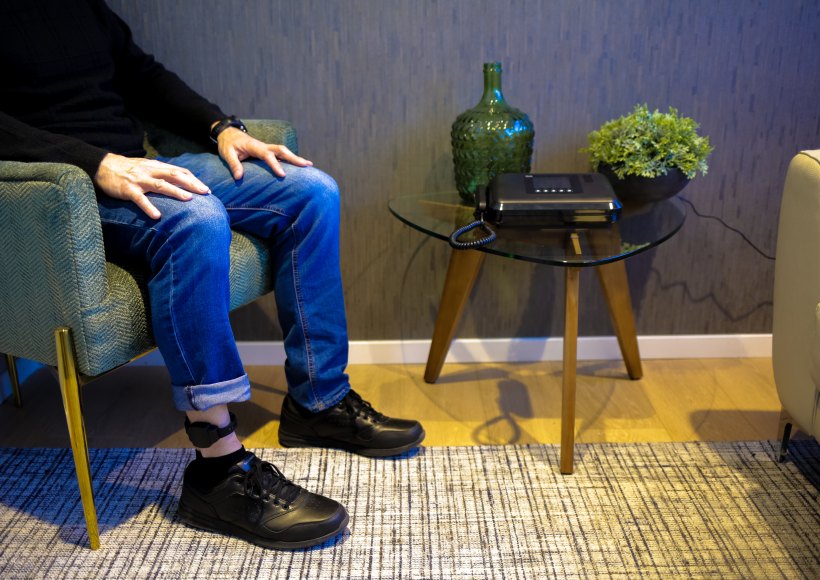Context
The Adoption of Electronic Monitoring Technologies
The Portuguese Ministry of Justice is no stranger to the multiple benefits that Electronic Monitoring (EM) can offer. Since a few decades ago, they have placed a high value on technological innovations which can reduce prison overcrowding, protect victims, reduce costs and ensure a secure rehabilitation of offenders.
In 2002, Portugal adopted their first Electronic Monitoring programme under the General Directorate of Reintegration and Prison Services (DGRSP) of the Portuguese Ministry of Justice. The inaugural programme enabled offenders in some districts of the Lisbon region and in a pre-trial situation, to remain at home under a detention curfew monitoring programme.
At the end of 2002, the success of this first programme led to the extension of Electronic Monitoring to the whole Lisbon region and then, later in 2003, it was extended to the Oporto region districts.
In 2005, the positive results of the Pre-Trial Programme gave the Portuguese Government a confidence boost for its national dissemination (including the Portuguese islands of Madeira and Azores) and for the development of an additional programme applied to post-trial situations. In addition, a Domestic Violence Deterrence Programme was implemented in 2011, allowing for both the surveillance of the aggressor and the safety of the victim.
Problem
Grappling with prison overcrowding
When Portugal’s prisons exceeded their capacity by 7%, the Portuguese Ministry of Justice made the executive decision to eliminate the issue of overcrowding by providing the offenders with alternative sentencing which would allow for them to continue with their daily lives while ensuring the safety of society.
In 2017, a legislative decision made by the Portuguese Ministry of Justice initiated a Home Detention Curfew Programme with Work Release intended for the early release of prisoners through EM. The Early Release Programme was deployed in November 2017, in cooperation with Attenti’s electronic monitoring solutions and SVEP, a security services company.
While reducing prison overcrowding by shortening imprisonment length (on a case-by-case basis), the Programme aims to enable offenders to be safely and carefully reintegrated into society, while holding down a job during day time and living within the confines of their private environments.
Solution
The value of Attenti’s EM solutions
By providing “safety-nets” for people at risk, breaking the cycle of recidivism and helping people overcome obstacles, Attenti’s electronic monitoring solutions can have a positive impact on communities and society.
They are solutions that are monitored by a surveillance centre which is in operation 24 hours a day, 365 days a year.
While offenders are under surveillance, they can return to their everyday lives within their designated restrictions. The enforcement of pre-defined schedules helps offenders modify their behaviour and facilitates their rehabilitation into society.
A home curfew unit is set up inside the individual’s house or confinement facility, while an electronic monitoring bracelet is attached to the individual’s ankle, enabling permanent monitoring within a predefined range. Attenti´s monitoring solution is used by DGRSP to monitor the individual’s confinement in their residence or any other predefined facility, triggering an alarm whenever such confinement – during restricted hours – has been transgressed.
Results
Although in 2016 the prison occupancy level in Portugal was at 107%, it has decreased to 99.8% since the launch of the Early Release Programme in November 2017.
While the programme has been running for slightly more than a year, DGRSP boosts the strong impact it has had in such a short period. With the occupancy decrease, the most positive results have included, firstly, successful law enforcement, with offenders complying with designated restrictions and jurisdictional orders. Secondly, the results have led to an accelerated and safe offender rehabilitation, and thirdly, cost savings. In fact, the cost comparison between a day in prison versus a day on EM is incomparable: less than one-third of the cost of housing a prisoner.
A successful EM programme is the result of many successful performances from DGRSP probation field teams, monitoring and control officers, public safety authorities, and technology providers among other critical stakeholders. Attenti and SVEP have made all efforts to remain reliable and flexible partners, coping with the growth challenges and always offering 24/7 availability to adjust technology to the specific needs of the Portuguese Ministry of Justice in the management of the Electronic Monitoring programme.
//
Attenti’s mission is to create a positive social impact, by providing “safety-nets” for people at risk, breaking the cycle of recidivism and helping people overcome substance abuse. With their electronic monitoring solutions (community-based, supervised release and substance abuse monitoring), Attenti strives to make a positive impact on communities and society.




